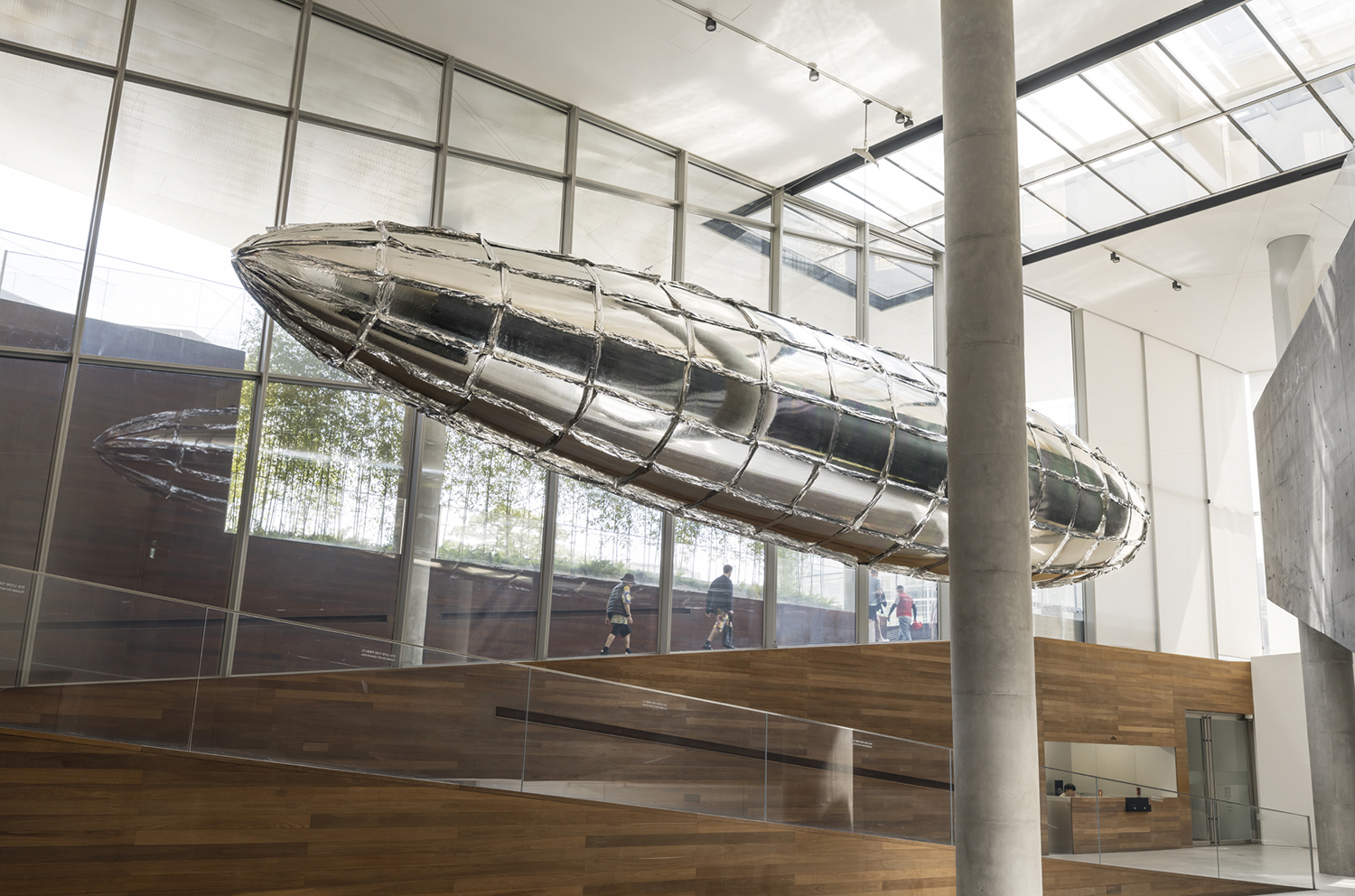SPACE November 2025 (No. 696)

Intallation view of Willing To Be Vulnerable—Metalized Balloon (2015 – 2016, 2020) ©Jeon Byung-Cheol / Image courtesy of Leeum Museum of Art

Exhibition view of ‘Lee Bul: From 1998 to Now’ at Ground Gallery ©Jeon Byung-Cheol / Image courtesy of Leeum Museum of Art
The large-scale survey exhibition ‘Lee Bul: From 1998 to Now’, featuring Lee Bul, a leading figure in contemporary Korean art, is on show at the Leeum Museum of Art. Having presented radical works that explore the relationships among the body and society, humanity and technology, nature and civilisation, as well as the power structures surrounding them, she has established herself as a major figure in contemporary art. During her first decade, she focused mainly on performance art. This exhibition encompasses representative sculptures, installations, and paintings from more than thirty years of her artistic journey since she gained international attention with Majestic Splendor (Hwa Um) (1997), a work shown at the Museum of Modern Art in New York in which she decorated dead fish with beads and displayed them in vinyl bags.
The exhibition is organised across two levels – the Black Box and the Ground Gallery – and above the ramp leading into the Black Box, a silver airship measuring 17m in length, Willing to Be Vulnerable—Metalized Balloon (2015 – 2016, 2020), has been installed. It references the early twentieth-century Zeppelin, recalling the 1937 Hindenburg disaster. The airship symbolises both the utopian dreams and the failure that technological progress brings, revealing humanity’s instinctive desire to envision lofty ideals and move towards them, as well as the fact that such desire has been endlessly acted upon. Exhibited together, Long Tail Halo: CTCS #1 (2024), a human-like form, demonstrates Lee Bul’s unique visual language of hybridity, in which art-historical references spanning different eras and styles intermingle with fragments of the human body, machines, and architecture, transforming the multilayered elements of history, culture, humanity, and technological civilization into abstract forms.
Across more than 150 works included in this exhibition, many unfold in diverse forms but are connected in that they simultaneously symbolise humanity’s longing for progress (utopian illusion) and its frustration (error). Inside the Black Box, the large-scale mirror installation Civitas Solis II (2014) covers the walls and floor, and it is shown alongside the artist’s early representative work Cyborg W6 (2001), the karaoke installation Gravity Greater Than Velocity I (2000, recreated from the 1999 version) first introduced at the 1999 Venice Biennale, and Aubade (2007), which borrows the utopian expressions of modern architecture. Although belonging to different series, these works share the common themes of the relationship between humanity and technology and the desire for perfection, questioning the complexity of utopian desire.
In the underground Ground Gallery, the Mon grand récit series developed since 2005 forms the core of the exhibition. According to Jean-François Lyotard, the essence of modernity lies in the continuous creation and failure of grand narratives that attempt to reduce numerous heterogeneous histories into a single universal story. Beginning with this distrust, the artist dismantles and mixes fragments of individual and collective memory, history, and various sociocultural references to construct allegorical landscapes. Here, architecture functions as the medium that most clearly reveals human hope and vision, and Lee Bul has referred to architecture in various works as a framework to visualise the desires and contradictions inherent in modernist ideology. In Mon grand récit: Weep into stones… (2005), she used Hugh Ferriss’s skyscraper studies and sectional models of the Hagia Sophia Mosque, and in After Bruno Taut (Beware the sweetness of things) (2007), she borrowed Bruno Taut’s unrealised visionary architectural projects to overlay images of utopia and ruin.
Also presented are the planar series Perdu and Untitled (Willing to Be Vulnerable–Velvet), which have been developed in earnest since the 2010s. In terms of content, they reflect the themes and motifs of the artist’s sculptural works, while formally they construct surfaces that cross between painting and sculpture and experiment with new materials such as mother-of-pearl and velvet. The exhibition runs until Jan. 4, 2026.





